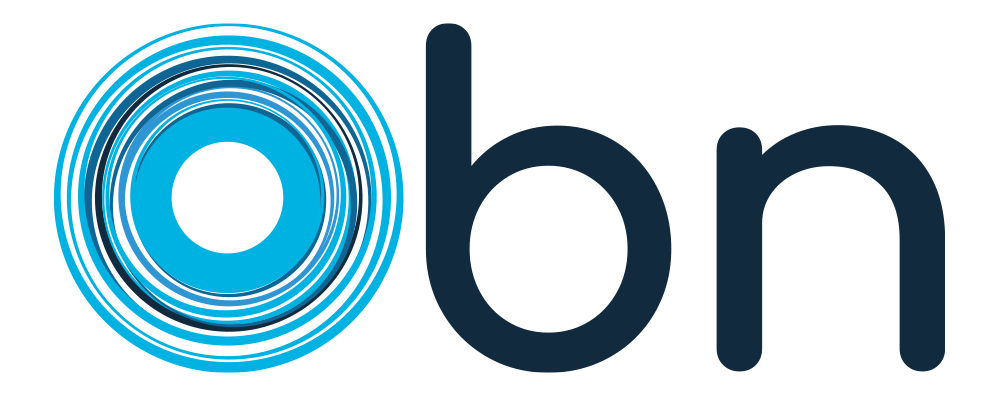
The digital economy requires a legal environment fit for the future. As emerging technologies create new business models, there grows a pressing need for creating, modifying and enforcing regulations. Yet, the challenge is finding a delicate balance between protecting public interests and allowing the innovation to flourish.
Germany’s BDI[1] and Noerr LLP, a leading European law firm, presented a survey on the digital transformation of the economy and published a legal opinion. The very reason of preparing this opinion paper was summarized in the report: “Business is going digital – do the legal framework conditions also need to “go digital”? Do laws in Germany have a negative impact on the development and use of digital innovations, applications and business models? Questions such as these place legal experts at the heart of the public discussion. This publication is intended to promote a legal discourse involving business, policy-makers and academia in equal measure. The aim of this discussion must be to shape a competitive legislative framework for the industry of the future.”
The outcome of the BDI’s survey, which was well compiled in the opinion prepared by Noerr, may be expanded to all sectors and markets, as the challenge as to how the regulatory framework must be drawn reaches beyond EU and beyond all national borders. The result of the survey of BDI and Noerr suggests that, “German economy requires a uniform and future-oriented European legal environment in order to successfully develop new digital innovations, applications and business models.”[2]
We are going through such interesting times. Technological innovations shape the dynamics of the businesses and have already started to change the way we live. New technologies give rise to new and unique challenges. These are spearheaded by the issue of regulation, the challenge for law to keep up with technological evolution. As governments, policymakers and regulators try hard to cope with the regulatory challenges posed by digital technologies, four foundational questions are critical to address:
- What’s the current state of regulation in the area?
- What’s the right time to regulate?
- What’s the right approach to regulation?
- What has changed since regulations were first enacted?
In an effort to respond to the foregoing questions, we first need the profound analysis of each phase. Deloitte Insight’s article titled “The Future of Regulation, Principles for Regulating Emerging Technologies” discusses the answers to these questions, summary of which is provided below:[3]
1.What’s the current state of regulation in the area?
The first step in the pre-regulatory phase should involve a thorough review and understanding of pertinent existing regulations, looking for those that might be blocking innovation, are outdated, or are duplicative. By current state, we refer to the whole ecosystem of regulation that could apply. A extensive review forces regulators to evaluate whether alternatives to regulation or adjustments to current rules could adequately address the perceived problem.
2.What’s the right time to regulate?
How can regulators avoid the too fast or too slow problem? A number of regulatory principles, particularly adaptive regulation and regulatory sandboxes are designed to help answer the “when” question by both bringing regulators closer to the technological innovations while also shifting to a more agile regulatory model.
3.What’s the right regulatory approach?
Policymakers have a host of reasons for regulating, but generally, they are trying to protect citizens, promote competition, and/or internalize externalities. Depending on which of these reasons is most important in a given situation will impact the best regulatory model to use. A wide variety of potential approaches exist between heavy, precautionary regulation on one end of the spectrum and little to no regulation on the other end.
4.What has changed since regulations were first enacted?
Considering the rapid rate at which emerging technologies are progressing and business models evolving, it is a good bet that in order to stay relevant, regulations applied today will need to be revisited within the next decade or so. There are a variety of ways to institutionalize such automatic reviews such as the European Union’s Regulatory Fitness and Performance (REFIT) program, which conducts retrospective evaluations to look for laws that are obsolete or in need of revision.
In consideration of the above-explained phases that each regulator and stakeholder shall bear in mind, there are in fact few models/principles, generally discussed by various authorities for regulating the emerging technologies. Benefiting from either one of these principles, or the combination thereof, may constitute a much-needed aid for the actors to be involved in the preparatory work of regulations.
Wait-and-See
One possible approach for regulators is to wait and see how the technology unfolds while continuing to apply existing legal frameworks. Under the wait-and-see option, a novel phenomenon is allowed to unfold before concrete guidelines and rules are devised. This appears to be the mainstream regulatory approach at this moment in time, as it allows regulators to observe how disruptive technologies develop without the need to make explicit pronouncements on the matter.[4] Wait-and-see is also the stance followed by the European Commission in other domains of digital innovation, notably the platform economy.[5]
Adaptive regulation
Adaptive regulation requires a shift from “regulate and forget” to a responsive, iterative approach. Rapid change, pivoting business models, and experimentation are hallmarks of technology-driven businesses, but are rarely the norm in regulation. Traditionally, regulators conceptualize new rules and regulations in response to market developments or new legislation. Next, they spend months or years drafting rules and presenting a first draft for public comment. Finally, they examine these comments and most probably change the proposed draft accordingly. Yet the problem with this approach is that first, regulators often don’t really know how businesses and consumers will react to new regulations; and second, the rules are rarely reconsidered once in effect.
Adaptive approaches to regulation, rely more on trial and error and co-design of regulation and standards; they also have faster feedback loops. More rapid feedback loops allow regulators to evaluate policies against set standards, feeding inputs into revising regulations. Number of tools to seek such feedback may be listed as setting up policy labs, creating regulatory sandboxes, and providing representation to industry in the governance process.
Soft law mechanisms, instruments or arrangements that create substantive expectations that are not directly enforceable, offer another tool for shifting to more adaptive regulation. Unlike hard law requirements such as treaties and statutes, soft law can include informal guidance, a push for industry self-regulation, best-practice guidance, codes of conduct, and third-party certification and accreditation.
Regulatory sandboxes
A regulatory sandbox can be defined as a set of rules that allows innovators to test their product or business model in an environment that temporarily exempts them from following some or all legal requirements in place.[6]
An accelerating trend for regulatory agencies is the creation of “sandboxes,” in which they partner with private companies and entrepreneurs to experiment with new technologies in environments that foster innovation. As also stated by FDA, “The role of a regulator is no longer just a regulator; it’s more of a partner in bringing safe and effective technologies to the table for people to have that high confidence in those technologies.” Sandboxes are controlled environments allowing innovators to test products, services, or new business models without having to follow all the standard regulations. Sandbox approaches are intended to help regulators better understand new technologies and work collaboratively with industry players to develop appropriate rules and regulations for emerging products, services, and business models.[7]
Issue New Legislation
Despite the still early stages of the technology’s development, a number of jurisdictions have already taken the step of enacting new legislations in the wake of emerging technologies. While this presents the advantages of portraying the jurisdiction as a progressive venue to attract innovation, it also bears the risk of being premature. Such legislative enthusiasm may indeed prove to have negative consequences in the long-term as the technology continues to evolve, which may result in a need for legislative amendment sooner rather than later.
Collaborative regulation
Collaborative regulation suggests aligning regulation nationally and internationally by engaging a broader set of players across the ecosystem. As the digital economy expands, with new business models, technologies, products, and services, regulators around the world can benefit from collaborative approaches such as co-regulation, self-regulation, and international coordination. Through multi-stakeholder meetings that produce concrete policy guidance and voluntary standards, regulators and firms as well as other interested parties can be engaged in the process.
This collaborative approach can encourage innovation while protecting consumers from potential fraud or safety concerns. In this approach, private, standard-setting bodies and self-regulatory organizations also have key roles to play in facilitating collaboration between innovators and regulators.
What do we do now?
In light of the above, the key question for regulators and all stakeholders is how to tailor regulations such that it will take into account both pillars; establishing a regulatory framework, which aims to protect the citizens and the public order; and providing a space for innovation to thrive. Regulator’s role must be just that: protection of public interest and to stimulate innovation at the same time.
In order to succeed at this challenging goal, we must know that the burden does not solely rest on regulators themselves. Rather, industry and other stakeholders should actively seek dialogue with regulators in order to better explain their technology, but also their regulatory fears and needs. It is indeed only through collaborative effort that the regulatory challenges posed by disruptive technologies can be addressed satisfactorily.[8]
Regulatory concerns associated with disruptive technologies will likely increase in the coming years.[9] Today’s challenges will continue to repeat themselves in new forms, at the same speed as innovation. Thus, the right approach must be adopted, supported by collaborative effort. The fight of the modern regulator (referring to not only public authorities, but also private companies, stakeholders, NGO’s) will be to apply the right tools and models, in consideration of the needs and dynamics of society.
References:
[2] https://www.noerr.com/~/media/Noerr/PressAndPublications/Brochures/studien/Legal-challenges-of%20digitalisation-Industrie-40.pdf
[3] https://www2.deloitte.com/insights/us/en/industry/public-sector/future-of-regulation/regulating-emerging-technology.html
[4]https://static1.squarespace.com/static/56330ad3e4b0733dcc0c8495/t/5b5c857b758d46f72cc9d37a/1532790140829/01+Vol_19_No_4_Finck.pdf
[5] https://eur-lex.europa.eu/legal-content/EN/TXT/?uri=COM%3A2016%3A356%3AFIN
[6] https://www.bbva.com/en/what-is-regulatory-sandbox/
[7] https://s3.us-east 2.amazonaws.com/briwebinars/2018+Blockchain+Regulation+Roundtable_Blockchain+Research+Institute.pdf
[8]https://michelefinck.eu/;https://static1.squarespace.com/static/56330ad3e4b0733dcc0c8495/t/5b5c857b758d46f72cc9d37a/1532790140829/01+Vol_19_No_4_Finck.pdf
[9] https://papers.ssrn.com/sol3/papers.cfm?abstract_id=2808044

